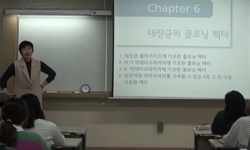Occupancy of the T-cell receptor (TCR) by antigen in association with class Ⅱ MHC molecule is required for the initiation of T cell activation. However TCR stimulation is not a sufficient signal to account for all the observed events that occur duri...
http://chineseinput.net/에서 pinyin(병음)방식으로 중국어를 변환할 수 있습니다.
변환된 중국어를 복사하여 사용하시면 됩니다.
- 中文 을 입력하시려면 zhongwen을 입력하시고 space를누르시면됩니다.
- 北京 을 입력하시려면 beijing을 입력하시고 space를 누르시면 됩니다.
역전사 중합효소 연쇄반응을 이용한 사람의 활성 T세포 항원 CTLA-4 유전자 클로닝 및 마우스 L세포에서의 발현 = Cloning of Human CTL-4 cDNA by Using Reverse Transcription-polymerase Chain Reaction and It's Expression in Murine L cell
한글로보기https://www.riss.kr/link?id=A2064819
- 저자
- 발행기관
- 학술지명
- 권호사항
-
발행연도
1993
-
작성언어
Korean
- 주제어
-
KDC
510.000
-
자료형태
학술저널
-
수록면
587-597(11쪽)
- 제공처
- 소장기관
-
0
상세조회 -
0
다운로드
부가정보
다국어 초록 (Multilingual Abstract)
Occupancy of the T-cell receptor (TCR) by antigen in association with class Ⅱ MHC molecule is required for the initiation of T cell activation. However TCR stimulation is not a sufficient signal to account for all the observed events that occur during T cell activation. And in the absence of a second costimulatory signal provided by abtigen presenting cell antigen specific signal may lead to clonal inactivation or energy. CD28, a T cell surface molecule first defined by monoclonal antibody 9.3 on human cells, appears to function as an alternative, TCR/CD3-independent, activation pathway for T cell. This molecule provides costimulatory signal for T cell proliferation by increasing a number of lymphokines and cytokines production. A T cell activation antigen CTLA-4 is homologous to CD28 with 28% amino acid and 67% of nucleic acid homology in the protein coding region. CTLA-4 was ofiginally identified by the differential screening follosing subtractive hybridization of murine cytotoxic T cell cDNA library and mapped to the same lacation on chromosome 2 in human and chromosome 1 in mouse as CD28. These findings and activation associated expression pattern of CTLA-4 raise question about functional role of this molecule in T cell activation. In this study human CTLA-4 cDNA was amplified from phytohemagglutinin (PHA)-stimulated human peropheral blood lymphocytes mRNA by using reverse transcription-ploymerase chain reaction (RT-PCR) method. And amplified human CTLA-4 cDNA was subsequently cloned into pRC/CMV vector. In double stranded DNA sequencing the 331st base of protein coding region was changed from guanylic acid of human CTLA-4 from alanine to threonine. Murind L cell transfected with this clone expressed 36kD protein. It appears that this dirrerence of molecular weight between native (34kD) and recombinant (36kD) human CTLA-4 molecule may due to glycosylation differences. The cDNA and murine CTLA-4 molecule may due to glycosylation differences. The cDNA and murine L cell lines expressing human CTLA-4 developed by this study would contribute in future work unveiling the biological rile of CTLA-4 in T cell activation.
동일학술지(권/호) 다른 논문
-
인체 폐암종에서 p53 암억제 유전자의 발현에 관한 연구
- 한양대학교 의과대학
- 이영규
- 1993
-
- 한양대학교 의과대학
- 박태서
- 1993
-
Bleomycin이 모낭의 기질세포에 미치는 영향에 관한 전자현미경적 연구
- 한양대학교 의과대학
- 이영만
- 1993
-
난소암 환자 복수내의 면역복합체로부터 새로운 암관련항원 존재 확인
- 한양대학교 의과대학
- 노만택
- 1993




 RISS
RISS







